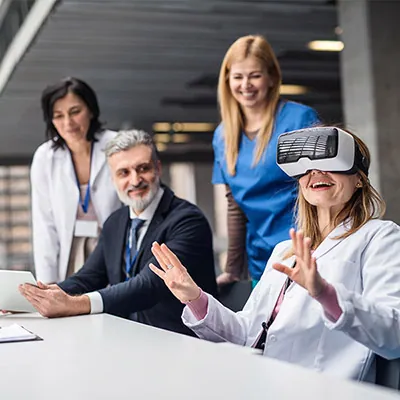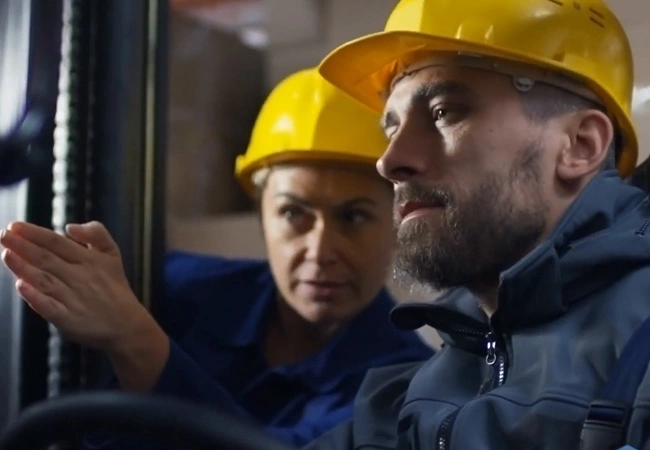Corporate Headquarters
475 Metro place South, Suite 120, Dublin, OH 43017, USA,
Direct: +1 614-707-5225
Global Technology Center
SKCL Infinite Towers, A21 & A22, Thiru-vi-ka Ind. Estate, Guindy, Chennai-600032, India,
Direct: +91 (44)-2250-1363
Reduce Training Time, Increase Retention, and Improve Performance
Start Your Free TrialIntroduction
Adopting AR & VR in your organization can reduce training time, enhance the onboarding process, increase retention, and improve the performance of your employees. AR/VR-based 3D simulations offer a life-like training experience and the necessary tools to track learners' progress and ensure that the training programs produce the desired result.
How to Use AR & VR for Workforce Development
AR and VR can be used in workforce development to help organizations transition
from traditional training methods, recruitment, and team building to more of a
technology-based workforce using AR and VR. This technology has the potential to help
organizations train new employees, advance current employees’ skills, elevate the
recruitment process, and expand ways to do team building.
AR and VR provide employees with an interactive and immersive experience that helps them
retain information faster and easier as they are learning through experience. An example is:
a new employee who is training to be a technician can start by using AR to learn where the
controls are on the machine and how to fix the issue as practice, so they feel prepared and
confident in their work.
 Streamline Onboarding
Streamline Onboarding Safe Training Environment
Safe Training Environment Cost-Effective Training
Cost-Effective Training Improved Knowledge Retention
Improved Knowledge Retention Enhanced Productivity
Enhanced Productivity Faster & Efficient Training
Faster & Efficient Training
Benefits of AR & VR in Workforce Development
There are several benefits to using AR & VR when it comes to workforce development. Some benefits are that AR and VR are cost-effective and safe.
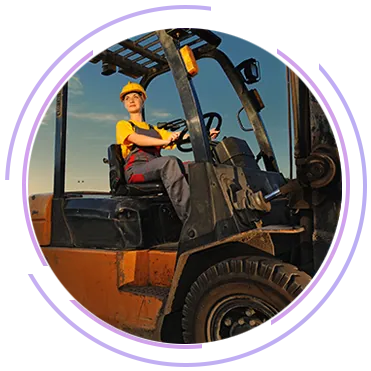
Low Risk
Organizations can use AR & VR to help train new employees with little-to-no risk of hurting themselves or others. The simulated environment provides employees with an opportunity to experience different scenarios to help them prepare for the real thing. For instance, it can help employees who will be operating a forklift and prepare them for different situations. That way, when they are actually operating the forklift, they will be better prepared, and less likely accidents or injuries will happen.

Cost-Effective
AR and VR are more cost-effective than traditional methods of training, as traditional methods take enormous amounts of time and are expensive. It can also be even more expensive if the training is not effective, and the organization has to perform more. This is likely to happen as many employees still feel they are not properly prepared or trained after. Thus, VR and AR are affordable ways to train new employees as they only have to make a one-time purchase of headsets and controls.
Yes, this may cost more upfront, but it is beneficial in the long term, as organizations will spend less money on training. Employees will feel more prepared for work. A survey done in 2020 showed that employees feel more confident after VR training and exhibited 40% improvement and understanding compared to traditional training. Thus, VR and AR training can help employees feel more prepared for their job and save organizations money.

Memory Retention
AR and VR are exciting, heavily interactive, and engage multiple senses and emotions. Thus, VR and AR enhance retention rates due to the immersive experiences and interactions. For that reason, VR provides employees with the ability to recall the content as if it was their own memory. For example, in 2017, a study was done where participants were presented with a 360-degree VR and a 2D video of a motorcycle ride, which was followed up with an unannounced survey 48 hours later, that was meant to recall their memory recognition. The results showed that participants associated the VR video with themselves and felt that they really did ride the motorcycle. In contrast, the traditional video felt like an isolated event that happened to someone else. Thus, if companies decided to use AR and VR for training and aspects of the job, it can provide their employees with better memory retention, which would result in them being better at their job.
Using AR & VR in Recruitment
Using AR and VR in recruitment can be used to help elevate companies and their hiring process. As in highly competitive markets, AR and VR can help showcase the brand and attract the most desirable candidates as they are more likely to choose the company that offers the latest technology.

VR provides companies with the opportunity to expand the recruitment process to more candidates, even if they are located somewhere else. VR can also help with the hiring process as it provides candidates the opportunity to get an office tour virtually and experience what the job is like on a day-to-day basis without wasting the company’s time and resources. Some companies already do this; for example, Jet, an e-commerce platform, uses Samsung’s VR gear to recruit new employees by creating a workplace simulation to give them an honest glimpse of the company’s culture.

AR in the recruitment process adds 3D computer-generated objects that provide the candidate with a new immersive reality that engages their senses and allows them to test the companies’ products and other resources safely. AR can be used to interview candidates by having them play different games related to the position. Then, the company can quickly decide if the candidate is suitable for the job or not. For instance, the company Hershey currently uses AR to engage potential candidates with the company and its culture. This allows candidates to experience what it would be like to be a part of the team.
How to Use AR & VR Technologies to Gamify Job Applicants
There are several benefits to using AR & VR when it comes to workforce development. Some benefits are that AR and VR are cost-effective and safe.
How to Use AR & VR Technologies to Gamify Job Applicants - Organizations who decide to use AR & VR can gamify job applicants during interviews by using fun and interactive games to play with the applicants during interviews. The games can help organizations and candidates quickly learn about each other. For instance, some organizations use games like EY’s mobile game called Peak Strength, where candidates explore a virtual mountain. The game is meant to measure accuracy, logic, perception, and reaction. Using technology and games is important for organizations to stay relevant and keep younger generations interested. For instance, Lloyds Banking Group used VR during recruitment, and a Cardiff university politics and international relations graduate who works at Lloyds Banking Group stated, “It was one factor in my decision to accept the job.” Therefore, it is beneficial for organizations to stay updated with the latest technology and use it for games during recruitment, as it can be a major factor in one’s decision.
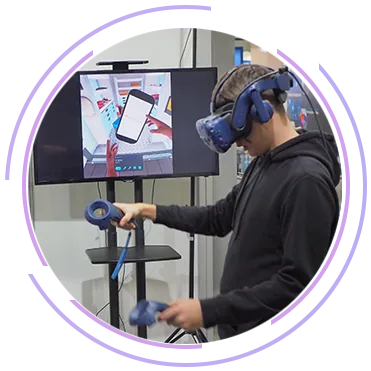
How to Use AR & VR for General Training - AR and VR can make general
training fun and more interactive. It can also be cost-effective as employers
would not have to waste resources on training. It would also help employees
become more efficient in their roles faster than traditional general training
due to employees being more engaged during the training.
According to an article by IBM, VR-based training can reduce training time by
40% and improve employee performance by 70%. Thus, it makes sense for companies
to switch to non-traditional ways of training as it is more efficient and
cost-effective.
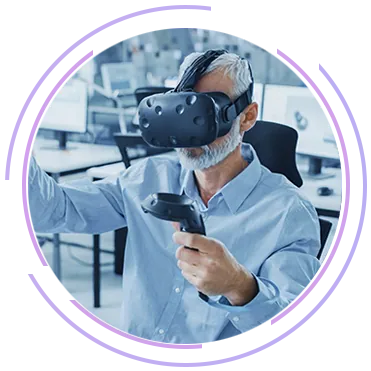
How to Use AR & VR for Team Building - Team building has always been a very important aspect of maintaining an organization’s culture. It helps employees and employers get to know each other, trust each other, and rely on each other during projects. In the past, people have planned team-building events at different places such as bowling alleys, restaurants, bars, and any relaxed environment. This can be fun, but it does come with its own set of challenges of transportation, costly, time-consuming, and exclusion. Thus, with today’s technology, it can be easier to have team building using AR and VR by having virtual gathering rooms where people can play games and collaborate. Using AR and VR for team building can keep everyone engaged, ensure no one is excluded, and cancel the need for transportation and expenses. Thus, AR and VR are not meant to replace these in-person interactions, but they are intended to be used as resources accessible to all.
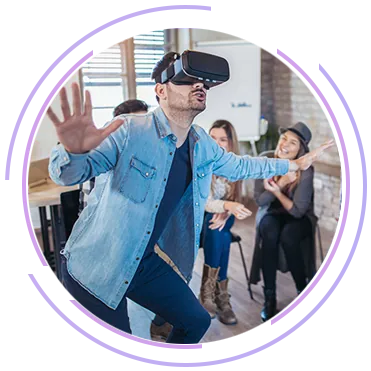
Examples of Augmented Reality in Workforce Development
Augmented reality combines both the real and virtual world, real-time interactions, and software with the ability to register both real and virtual objects in 3D. Thus, AR is useful for workforce development in various ways.
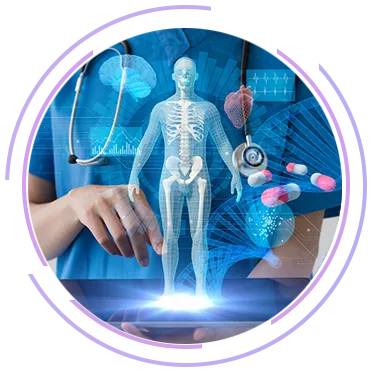
Medical Field
Augmented reality can be very helpful in the medical field. Many institutions use AR to see 3D graphics, immersive images of human bodies, and interactive visuals that provide guidance on different medical conditions.
Therefore, AR training will help potential and current employees with the skills to identify medical conditions and see different parts of the human body easier and clearer. This will provide more patients with better quality care and the potential to save more lives.
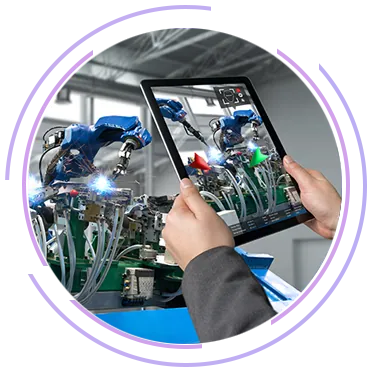
Manufacturing
Organizations can now use augmented reality to help train new employees and develop current employees’ skills further. For instance, a newly hired manufacturing worker may use augmented reality glasses or use a device such as an iPad to see all the graphics overlaid on the machine and how to operate the controls.
This training method will help train employees quickly and efficiently, providing well-trained employees for the organization.
Examples of Virtual Reality in Workforce Development
Virtual reality is a computer-generated environment that alters the user’s perceptions and allows them to interact with a simulated 3D environment. VR technology provides organizations with the opportunity to completely immerse their employees in an environment or situation, which will give them the opportunity to develop in their role and create different skills.
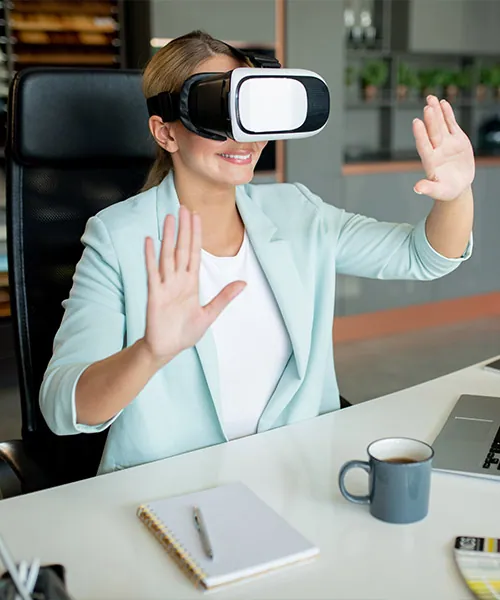
Develop Soft Skills
VR can help organizations train their employees to have different soft skills such as empathy, a professional attitude, and leadership skills. Organizations can ensure this by giving their employees different scenarios that they may face on the job using VR. Therefore, when an employee receives a call from an unhappy customer who is calling about a product they purchased, the employee will be prepared for this interaction and will know how to be empathic about the situation and professional.

Professional Driving
Traditionally, when companies hire a new driver, they have them watch and learn from other drivers and read manuals. However, a better way to learn is by doing. Thus, VR can help ensure companies that their drivers are ready and prepared for the road with an immersive and interactive experience, which puts them through several scenarios that feel real. VR will also help prevent any accidents from happening during training.
How XR Guru Helps to Improve Workforce Development?
XR Guru helps to improve workforce development by providing organizations with pre-made or customized packages for their specific field. XR Guru also provides features for organizations that allow them to see their data and help them determine the effectiveness of the training program and see what areas need improvement. In addition, they can track their employees' progress in training to ensure they are progressing along.
If your organization is not sure AR or VR technology would improve workforce development, you can visit the XR Guru website.
There are tons of information and resources for organizations to read about AR and VR in the workplace.
For instance, XR Guru houses several blogs and FAQs on immersive workforce training that can answer questions you may have.
Some of the FAQs are How can AR be used in the workplace or How AR/VR can help save your business money . XR Guru helps inform organizations about AR and VR technology and helps them get started when they are ready.
